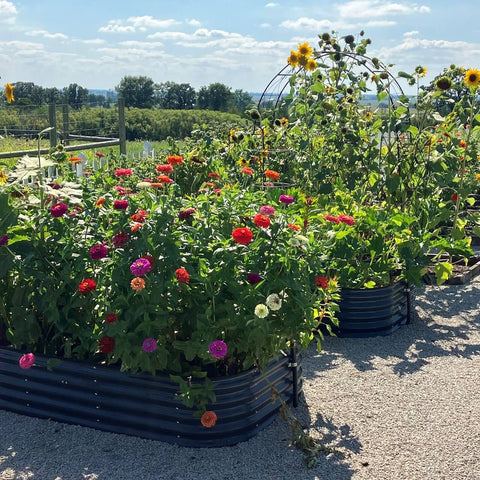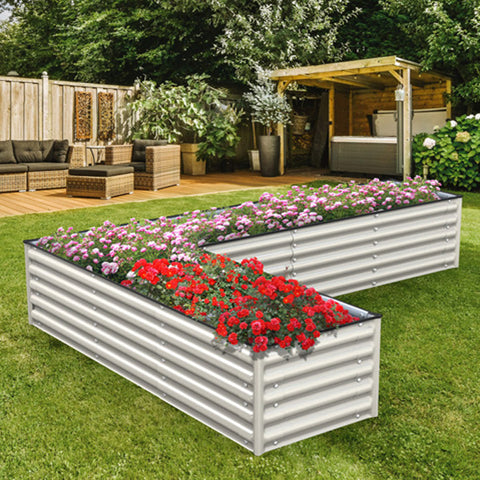The Importance of Honeybees and Garden Beds: A Symbiotic Relationship
Garden beds and honeybees share a fascinating and vital connection that has shaped human history and the natural world. From Europe to North America, and even down to New Zealand and Australia, honeybees have been esteemed for their honey production and revered as essential pollinators. This article explores the significance of honeybees in our lives, their critical role in pollination, and how gardeners can support these invaluable creatures to thrive.

The Revered Beekeepers of Europe and Honeybee Introductions
For centuries, beekeeping in Europe has held a revered status. Even during the challenging times of World War II, the British government allocated precious sugar to support beekeepers and sustain their hives. In the 17th Century, the introduction of the European Honey Bee, Apis mellifera, to North America brought with it a rich legacy of beekeeping and honey production. Flourishing colonies of these honeybees rapidly propagated across the continent, finding refuge in hollow trees and fallen logs. As settlers moved westward, Native Americans also discovered these hives and harvested the valuable honey they offered.
Honey's Cultural and Medicinal Significance
Honey holds significance beyond its role as a natural sweetener. It has religious and cultural importance for various societies, including Buddhist, Hindu, Jewish, and Islamic communities, where it is used in offerings and ceremonies. Additionally, honey was historically used in medicine, applied to wounds for its antibacterial properties, aiding in wound healing. Today, commercially available honey-infused salves continue to be used for wound care.
Vital Pollinators for Bountiful Harvests
Honeybees play a crucial role as pollinators, ensuring the propagation of many plant species. As they collect nectar and pollen from flowers, they inadvertently transfer pollen between blossoms, promoting fertilization and seed production. Unfortunately, the phenomenon of Colony Collapse Disorder (CCD) has had a devastating impact on honeybee populations, leading to a decline in pollination services for various crops and plants. Gardeners can support these vital pollinators by providing safe environments with limited pesticide use.
The Inner Workings of a Honeybee Hive
Inside a honeybee hive, a complex society thrives, with each member performing specific tasks. The queen bee, the sole reproductive female, is treated as royalty. The non-reproducing female worker bees collect nectar and pollen, tend to the queen and her eggs, produce honey, and build honeycombs. The resulting adult bees' development depends on the diet they receive as pupae—queens, workers, or drones. Drones serve the sole purpose of mating with the queen, and only a few are needed for this task. The worker bees are the ones seen foraging and buzzing around, contributing to the hive's functions.
Creating Bee-Friendly Garden Beds
For gardeners looking to support honeybees, planting native or species plants is highly beneficial. Honeybees are attracted to flowers that provide ample pollen and nectar, such as those in the mint family. Offering a sunny area with a variety of flowering plants ensures a welcoming habitat for honeybees. Garden beds with blooming plants at different times of the year provide a continuous supply of food for the bees, especially during early spring when dandelions, henbit, and clover offer essential nourishment.
Simple Ways to Help Honeybees Thrive
Beekeeping may not be feasible for everyone, but providing support for honeybees can be accessible to all. Offering a clean water source, such as a shallow birdbath with pebbles for bees to perch on, is crucial. Providing a variety of flowers that bloom at different times of the year can support honeybees throughout various seasons. Welcoming wildflowers like dandelions and clover in lawns can serve as life-saving early foraging options for bees.

In conclusion, the relationship between honeybees and garden beds is one of great importance and symbiosis. Understanding the significance of honeybees as pollinators and producers of honey, and the crucial role they play in our ecosystems, inspires gardeners to create bee-friendly environments. By providing a safe haven for honeybees to thrive, gardeners contribute to preserving these invaluable creatures and fostering abundant harvests for years to come.
